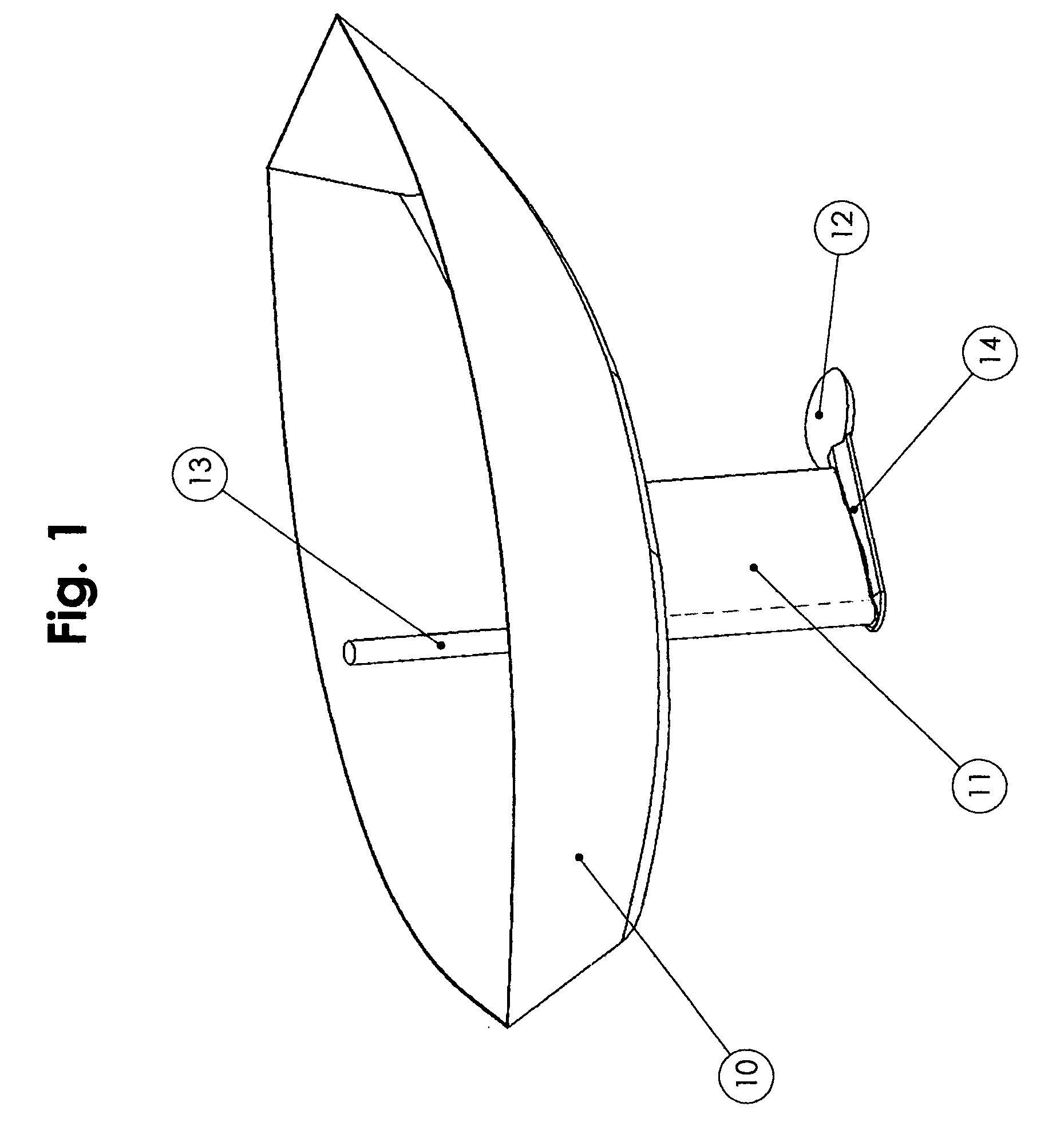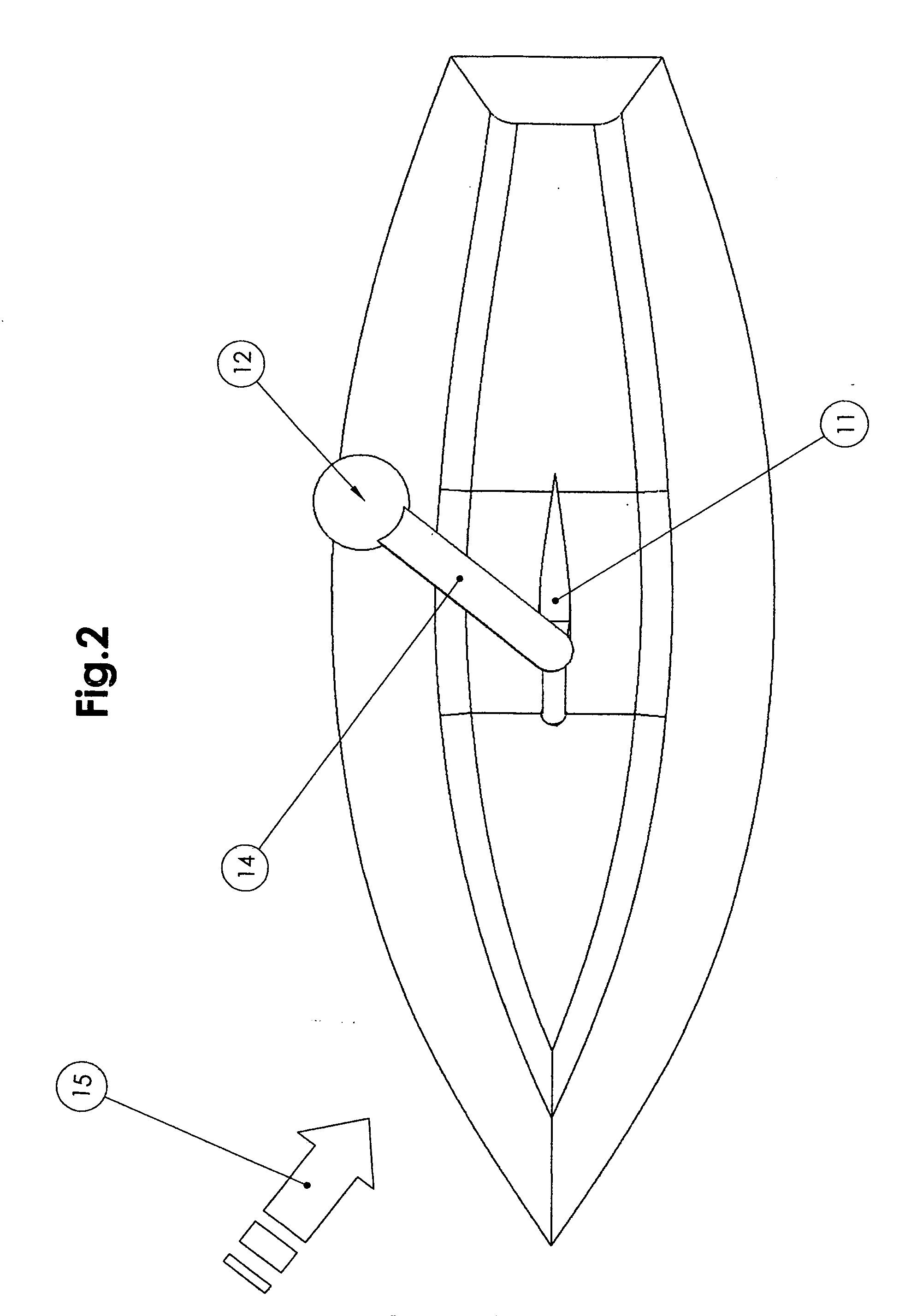Movable ballast in a sailing vessel
a sailing yacht and ballast technology, applied in the field of sailing yachts, can solve the problems of increasing drag, increasing weight, and reducing the effective area of the lifting surface of the keel, so as to reduce the angle of the heel center, increase drag, and increase weight
- Summary
- Abstract
- Description
- Claims
- Application Information
AI Technical Summary
Benefits of technology
Problems solved by technology
Method used
Image
Examples
Embodiment Construction
[0026]FIG. 1 shows a typical hull 10 with fixed keel 11 and ballast 12. The ballast is mounted to shaft 13 which is mounted and supported in the forward portion of the fixed keel. Rotating shaft rotates the ballast away from the centerline of the vessel. The connection and support of the ballast on the bottom of the keel can be arranged so that the center of mass of the ballast moves forward and angles down when rotated.
[0027]FIG. 2 shows stern on views of the location of the center of mass of ballast 16 with respect to the centerline of the vessel 14 as it is rotated about the keel 15. In this alternate embodiment the ballast is simply supported on the shaft, allowing the center of mass to move forward as the shaft is rotated, but in this embodiment, the center of mass remains in the same plane rather than angling down when rotated.
[0028]FIG. 3 shows plan views of the forces on a typical vessel equipped with rotate-able ballast in different wind and rigged conditions. FIG. 3A shows...
PUM
 Login to View More
Login to View More Abstract
Description
Claims
Application Information
 Login to View More
Login to View More - R&D
- Intellectual Property
- Life Sciences
- Materials
- Tech Scout
- Unparalleled Data Quality
- Higher Quality Content
- 60% Fewer Hallucinations
Browse by: Latest US Patents, China's latest patents, Technical Efficacy Thesaurus, Application Domain, Technology Topic, Popular Technical Reports.
© 2025 PatSnap. All rights reserved.Legal|Privacy policy|Modern Slavery Act Transparency Statement|Sitemap|About US| Contact US: help@patsnap.com



